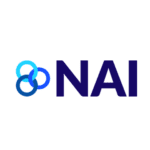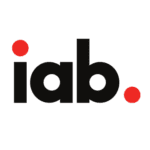What Does an Audience API do?
In today’s digital landscape, understanding your audience is paramount to creating successful marketing campaigns, developing engaging content, and delivering personalized experiences. The Audience API (try Meta’s definition!) is a powerful tool that enables businesses to gain valuable insights into their target demographics, preferences, and behaviors. In truth, by harnessing the potential of the Audience API, companies can unlock a wealth of information to optimize their strategies and enhance customer engagement. In this blog, we will delve into the world of Audience API and explore its capabilities, benefits, and real-world applications.
Why Follow an Audience API?
With the Audience API, marketers can gain a deep understanding of their customers, including demographics, interests, online behavior, purchase history, and engagement patterns – in a lot of ways, an API is a fancy term for a dashboard – like the one you have to control your social media profiles, Google AdWords, Facebook Ads, and other marketing tools – you actually use APIs all day, maybe, until now, without knowing it!
Key Features and Benefits
By leveraging this powerful tool, companies can refine their targeting strategies, create personalized experiences, and optimize their marketing efforts, including:
Enhanced Targeting
An API empowers marketers to refine their targeting strategies by leveraging precise audience segmentation. By analyzing customer data, businesses can identify specific demographics, interests, or behavior patterns, enabling them to tailor their marketing efforts to the right audience at the right time.
Personalized Content
With insights gained from their API, businesses can create highly relevant and personalized content. By understanding customer preferences, marketers can develop compelling messaging that resonates with their audience, resulting in increased engagement, higher conversion rates, and improved customer loyalty.
Improved Customer Experience
By leveraging an API, businesses can deliver exceptional customer experiences. By understanding customer behavior and preferences, companies can provide tailored recommendations, personalized offers, and targeted promotions, ensuring that each customer feels valued and understood.
Data-Driven Decision Making
An API provides access to rich, real-time data, empowering businesses to make informed decisions. By analyzing audience insights, companies can optimize marketing campaigns, refine product offerings, and allocate resources effectively. For example, your Google Adwords dashboard will show which words are pulling in high traffic (meaning they’ll probably need more spend) and which aren’t performing as expected.
Audience Expansion
An API enables businesses to discover new audiences and expand their reach. By analyzing existing customer data, companies can identify lookalike audiences with similar characteristics and preferences, opening new marketing opportunities and potential customer segments. As you can tell, an Audience API is instrumental in social media advertising. By leveraging audience insights, businesses can create highly targeted campaigns on platforms like Facebook, Instagram, and Twitter, ensuring that their ads reach the right people with the right message.
Real-World Applications
An API empowers businesses to make informed decisions, enhance customer engagement, and stay ahead of the competition, to put it simply.
Content Personalization
With an Audience API, companies can deliver personalized content across various channels, such as websites, email campaigns, and mobile apps. By tailoring content to individual preferences, businesses can enhance engagement and drive customer satisfaction.
Customer Relationship Management (CRM)
An Audience API seamlessly integrates with CRM systems, enabling businesses to enrich customer profiles with valuable data. This integration helps sales teams better understand their prospects, nurture leads, and improve customer relationships.
Market Research
Through an Audience API, marketers can find an invaluable tool for market research. By analyzing audience data, companies can gain insights into market trends, consumer preferences, and competitor analysis, allowing them to make data-driven decisions and stay ahead in a dynamic marketplace.




